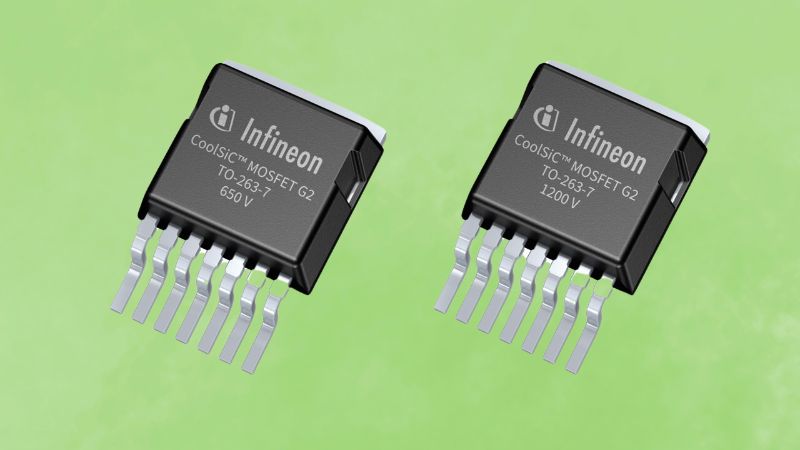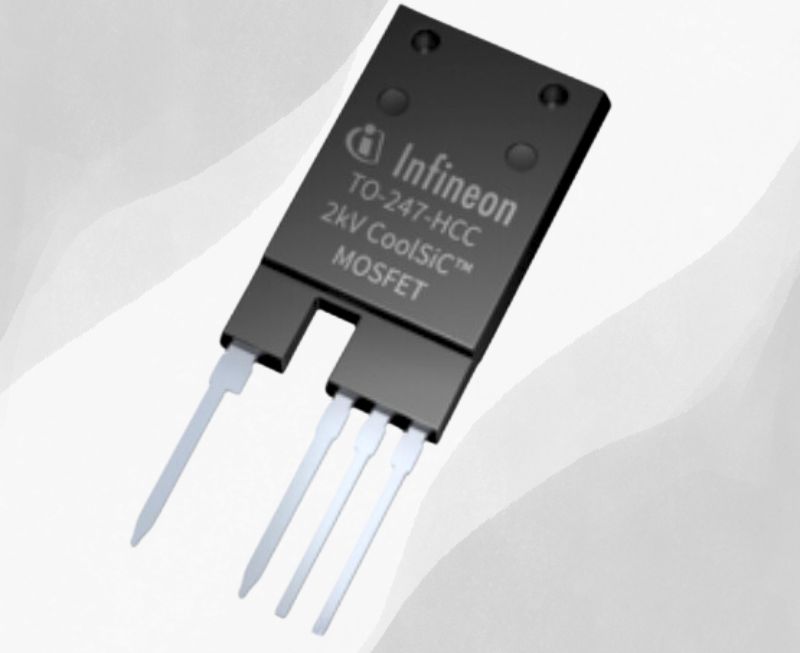Infineon Reveals a Slew of Cutting-Edge Switching Devices
Infineon’s state-of-the-art MOSFETs set new industry standards by offering high performance, increased power density, and enhanced efficiency.
Switching devices like MOSFETs facilitate the control and manipulation of electrical signals in various electronics applications. However, as demands for efficiency and performance increase, MOSFETs face challenges of higher power consumption, heat dissipation, and electromagnetic interference (EMI).
Infineon has released multiple switching devices, each claiming improved performance and efficiency to meet the modern demands of MOSFETs. Here’s a review of some of Infineon’s latest offerings.
CoolSiC MOSFETs 650 V and 1200 V G2. Image used courtesy of Infineon
Infineon’s G2 Silicon Carbide
When opting for efficient MOSFETs, designers face the challenge of optimizing conduction and switching losses. Conduction loss occurs during MOSFET operation when it is on due to current flowing through its on-resistance. Meanwhile, switching loss occurs during the MOSFET's transition from on to off states, primarily due to the capacitive behavior inherent in its structure.
To mitigate this tradeoff, Infineon recently announced its next-generation silicon carbide (SiC) MOSFET trench technology with its CoolSiC™ MOSFET 650 V and 1200 V Generation 2. Thanks to improved trench technology, the new devices improve on most notable performance metrics, including 5-20% lower power losses over typical load use cases, 6.7 mΩ channel resistance, and 2us withstand times.
CoolSiC MOSFETs Generation 2. Image used courtesy of Infineon
Another notable improvement is improved .XT package interconnects, which result in 12% better thermal resistance than G1.
Infineon’s CoolSiC MOSFETs 2000 V
High DC-link voltage and power density are crucial for efficient power conversion in MOSFETs. A higher DC-link voltage allows for reduced current levels, minimizing conduction losses and enhancing overall efficiency. Similarly, higher power density enables compact designs, which are crucial in space-constrained applications. These attributes collectively contribute to improved performance and reliability in electronics.
2 kV CoolSiC MOSFET with TO247-4-4 package. Image courtesy of Infineon
To this end, Infineon recently introduced their CoolSiC MOSFETs 2000 V family.
Enclosed in a TO-247PLUS-4-HCC package, the devices are designed for enhanced power density while maintaining reliability under high voltage and frequency conditions. These MOSFETs come in on-resistance ratings ranging from 7 mΩ up to 1,000 mΩ, offer a higher DC link voltage, and current capacities up to 202 A. These devices also benefit from thermal performance improvements due to the .XT package interconnects.
Infineon claims these devices, with a 2 kV breakdown voltage and robust body diodes for hard commutation, excel in solar, energy storage, and electric vehicle charging applications.
Infineon’s OptiMOS 6 MOSFETs
MOSFETs are susceptible to EMI emissions during switching transitions, which can disrupt nearby electronic components. Mitigating EMI is essential to ensure the reliable operation of electronic systems and compliance with electromagnetic compatibility standards.
In another development, Infineon unveiled its OptiMOS 6 200 V MOSFET product family, tailored for motor drive applications like e-scooters, micro-EVs, and e-forklifts.
Package options for the OptiMOS 6 devices. Image used courtesy of Infineon
Notably, compared to its predecessor, OptiMOS 3, the new OptiMOS 6 200 V portfolio boasts a 42 percent lower RDS(on), reducing conduction losses and increasing power output. Other improvements include integrating a broad safe operating area (SOA), improvements in diode behavior, and reduced reverse recovery charge, contributing to improved switching and EMI behaviors. Overall, these advancements ensure increased power density, efficiency, and system reliability, setting a new benchmark in the industry.
Driving the Future of Electronics
With a slew of MOSFET releases, Infineon aims to significantly improve all traditional pain points with semiconductor switching devices. With innovations like these, the industry seems to be moving in a positive direction toward more efficient and compact electronic designs, driving efficiency, performance, and sustainability in the electronics industry.










